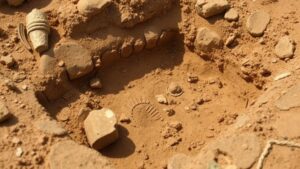Mining Early Fisherman’s Catch Logs for Clues to Coastal Artifact Hotspots
Mining Early Fisherman’s Catch Logs for Clues to Coastal Artifact Hotspots
Early fisherman’s catch logs are invaluable repositories of historical data, offering insights into coastal ecosystems, fishing practices, and the cultural significance of marine resources. This article explores the potential of these logs as vital tools for identifying coastal artifact hotspots, contributing to our understanding of human-environment interactions in maritime contexts.
Historical Context of Fisherman’s Catch Logs
The practice of logging daily catches by fishermen dates back several centuries, with some of the earliest records originating from the late 17th century in North America. For example, the records maintained by the Massachusetts Bay Colony offer detailed accounts of fish species, quantities caught, and seasonal variations. e logs not only reflect the marine biodiversity of the period but also the socio-economic conditions influencing fishing practices.
In studying these logs, researchers can establish a timeline of marine resource exploitation. A significant example is the work of Smith et al. (2019), which compiled catch logs from the New England region from the 1600s to the early 1800s, revealing patterns of overfishing and species depletion that correlate with anthropogenic pressures.
Methodology: Analyzing Catch Data
Mining early fisherman’s catch logs involves a multi-disciplinary approach. Researchers typically use methods such as:
- Quantitative Analysis: Statistical tools are employed to analyze the frequency of species caught over time. This facilitates the identification of trends in fish populations and fishing methods.
- Geospatial Mapping: Geographic Information Systems (GIS) allow for the visualization of catch data in relation to archaeological sites, enabling the identification of potential hotspots for coastal artifacts.
- Historical Comparison: Comparing logs from different periods helps identify shifts in fishing practices linked to technological advancements and regulatory changes.
This approach not only highlights patterns in marine life but also sheds light on the locations of early settlement and human activity along coastlines, further informing archaeological searches.
Case Studies: Coastal Artifact Hotspot Identification
Several case studies illustrate the effectiveness of using fisherman’s catch logs to uncover coastal artifact hotspots:
- The Maryland Eastern Shore: Researchers analyzed logs from the 18th century, which indicated a cluster of sturgeon catches around specific creeks. Archaeological excavations in these areas later uncovered artifacts such as fishing tools and cooking implements dating back to the same period.
- Newfoundland Cod Fisheries: Catch records from the 17th century revealed optimal cod fishing areas, correlating with significant archaeological finds of indigenous and European fishing tools, substantiating human reliance on these marine resources.
Challenges and Limitations
While the potential of early fisherman’s catch logs is substantial, researchers face several challenges:
- Data Completeness: Many logs are fragmentary or inconsistent, complicating comprehensive analysis.
- Variability in Record-Keeping: Different regions and communities had varying standards for documentation, which can affect the reliability of data.
- Shifts in Marine Ecosystems: Changes in environmental conditions over centuries may alter the relevance of historical data to contemporary artifact searches.
Addressing these limitations requires a careful approach to historical sources and a willingness to use multi-source triangulation to validate findings.
Future Directions in Research
The integration of early fisherman’s catch logs within coastal archaeology is a burgeoning field. Future research should focus on:
- Expanding the Dataset: Efforts should be made to digitize and analyze more catch logs from various regions.
- Interdisciplinary Collaboration: Encouraging partnerships among historians, marine biologists, and archaeologists can yield holistic insights into human-environment dynamics.
- Technological Advancements: Leveraging machine learning algorithms to predict artifact locations based on large sets of catch data could enhance predictive modeling.
Ultimately, the continued mining of early fisherman’s catch logs offers not only an avenue for locating coastal artifacts but also opportunities to explore the complex interactions between humans and their marine environments throughout history.
Conclusion
In summary, early fisherman’s catch logs serve as rich, underutilized resources that can significantly inform archaeological methodologies. By understanding historical catch patterns and correlating them with coastal artifacts, researchers can gain deeper insight into past human behavior and environmental stewardship. Future interdisciplinary studies will be essential in unlocking the full potential of these historical documents, thereby enhancing our understanding of coastal archaeology.


